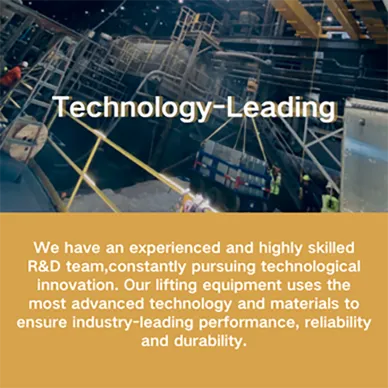movable gantry
Exploring the Concept of Movable Gantries
In the realm of engineering and construction, the term movable gantry refers to a versatile structure designed to aid in the lifting and transporting of heavy loads
. These gantries are crucial in various industries, including construction, shipping, and manufacturing, where heavy materials and equipment need to be moved efficiently and safely.A movable gantry typically comprises a robust frame constructed from steel or aluminum, supported by wheels or tracks that facilitate movement. This design allows the gantry to traverse along a predetermined path, enabling it to reach different areas of a site without the need for extensive disassembly. The ability to move freely makes these gantries indispensable in environments where both agility and strength are required.
One of the significant benefits of using movable gantries is their ability to adapt to various operational demands. For instance, in construction sites, they can be employed to lift large beams or prefabricated modules into place. By positioning the gantry above the work area, operators can precisely maneuver heavy loads, ensuring that materials are placed accurately, which is vital for maintaining structural integrity.
movable gantry

Moreover, movable gantries are not limited to construction; they play a significant role in the shipping and logistics industry. Shipping yards often utilize gantries to load and unload containers from ships, trucks, and trains. The mobility of these structures allows for quick transitions between multiple loading points, thereby enhancing the efficiency of cargo handling operations. In this context, time is money, and the ability to swiftly move containers can lead to considerable savings and improved turnaround times.
The use of movable gantries also helps to enhance workplace safety. By centralizing lifting operations in a controlled manner, the risk of accidents and injuries associated with manual handling is significantly reduced. Operators can control the motion of the gantry from a safe distance, minimizing exposure to hazards typically present in heavy lifting scenarios. Additionally, many modern movable gantries are equipped with safety features such as overload sensors and emergency stop buttons, further ensuring operator safety.
As technology continues to evolve, the design and functionality of movable gantries are also improving. Innovations in automation and remote control systems allow for more precise handling of loads, reducing the reliance on human intervention and increasing overall efficiency. Furthermore, advancements in materials science are leading to lighter yet stronger gantry structures, enabling easier transportation and setup.
In conclusion, movable gantries represent a critical component in various industries, providing robust and adaptable solutions for lifting and transporting heavy loads. Their ability to combine mobility with strength not only enhances operational efficiency but also significantly contributes to workplace safety. As technology progresses, the future of movable gantries promises even greater advancements, potentially transforming how industries handle heavy materials and streamline their operations. The versatility and reliability of movable gantries underscore their importance in the modern landscape of construction and logistics.
-
Unlock Seamless Relocation with Our Heavy Equipment Moving ExpertiseNewsJun.06,2025
-
Unleash Unrivaled Flexibility with Our Adjustable Gantry CraneNewsJun.06,2025
-
Unleash Heavy-Duty Efficiency with Our Industrial Gantry Crane SolutionsNewsJun.06,2025
-
Revolutionize Steel Handling with Our Magnetic Lifter RangeNewsJun.06,2025
-
Master Equipment Mobility with Premium Machinery Mover SolutionsNewsJun.06,2025
-
Elevate Your Material Handling with Magnetic Lifter TechnologyNewsJun.06,2025
-
YS Permanent Lifting Magnets: The Smarter Way to Handle SteelNewsMay.22,2025
